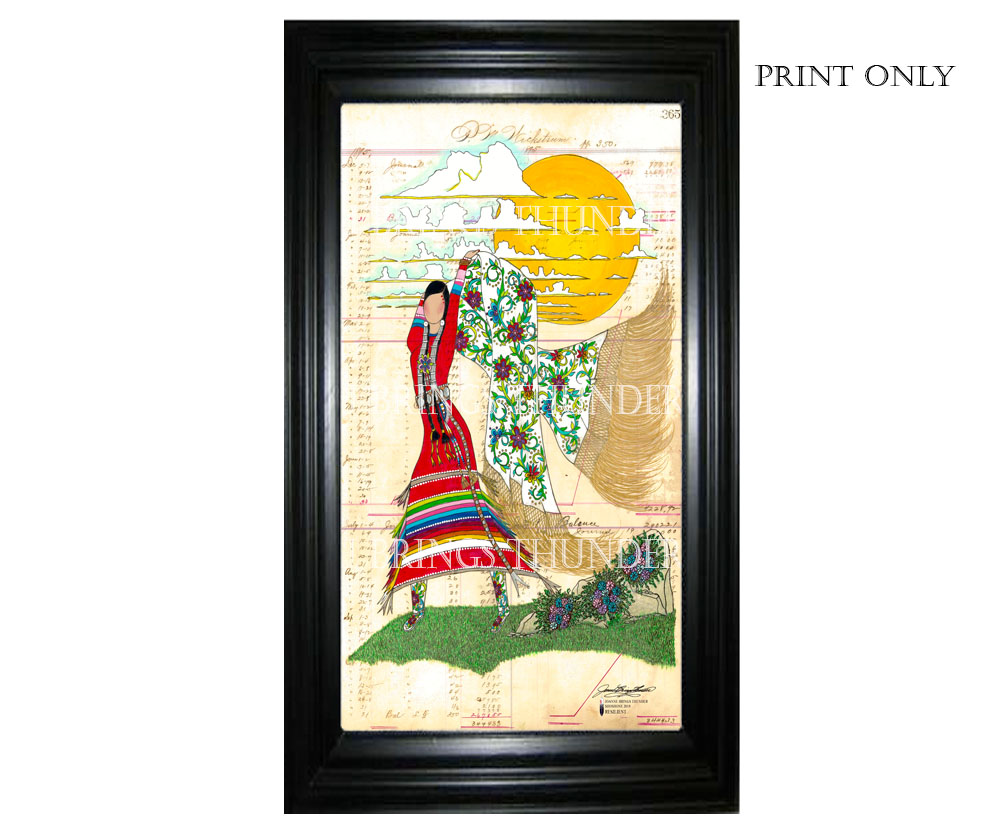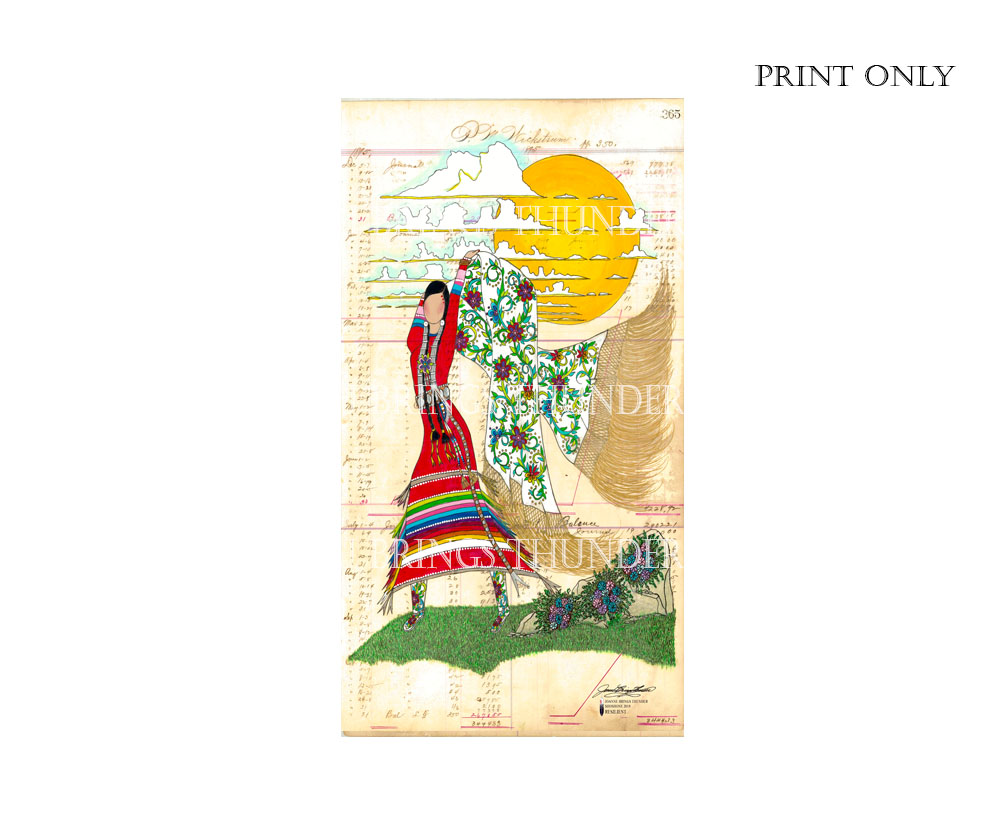Long Live The Matriarchy




Long Live The Matriarchy
39.00
***PRINT ONLY***
Long Live The Matriarchy
Mixed Media : Ledger Paper, Acrylic, Ink
Dimensions: 11”x17”
By: Joanne Brings Thunder
Contact with European invaders impacted all Native Americans. From the introduction of new items through trade, to fatal diseases, intermarriage, community relocation and forced “civilizing,” Native American lives would never be the same. The Shoshone, or Newé, a name we also call ourselves, were able to avoid many of these problems longer than other tribes, helping make us one of the largest land based tribes in the United States today. Although our population has fared relatively well, forced assimilation by the United States government, specifically during the 1920s and 1930s, affected many aspects of Shoshone life, including gender dynamics. The outcome of the changes from forced assimilation made women more economically and politically dependent on men than they had been traditionally. Before assimilation, women and men were able to equally contribute to the family income and, as a matriarchal society, women played a significant social and political role, but the assimilation program in the United States attacked and greatly reduced women’s economic and political status. During the 1960s and 1970s there was a nation-wide movement of Native American people for self-determination, cultural pride and a renewal of traditional ways, which reminded people of matriarchy among the Shoshone. However, it turned out that the Native American Movement had little impact among the Shoshone. Instead, some believe it was the contemporary feminist movement that had a greater, if indirect, impact on the gender dynamics by providing women with more economic opportunities. Politically, the former matriarchal structure has remained elusive, as males continue to dominate the governing tribal councils and aspects of Shoshone life. Many Shoshone families including my own however, still practice, acknowledge and teach our children the traditional matriarchal roles Shoshone still women hold even within our modern society.
Ledger Art History
This genre, often called Ledger Art, represents a transitional form of Plains Indian artistry corresponding to the forced reduction of Plains tribes to government reservations, roughly between 1860 and 1900. Due to the destruction of the buffalo herds and other game animals of the Great Plains by Anglo-Americans during and after the Civil War, painting on buffalo hide gave way to works on paper, muslin, canvas, and occasionally commercially prepared cow or buffalo hides.
Changes in the content of pictographic art, the rapid adjustment of Plains artists to the relatively small size of a sheet of ledger paper, and the wealth of detail possible with new coloring materials, marks Plains ledger drawings as a new form of Native American art. As such, ledger painting portrays a transitional expression of art and material culture that links traditional (pre-reservation) Plains painting to the Plains and Pueblo Indian painting styles that emerged during the 1920s in Indian schools in Oklahoma and New Mexico.
Beginning in the early 1860s, Plains Indian men adapted their representational style of painting to paper in the form of accountants ledger books. Traditional paints and bone and stick brushes used to paint on hide gave way to new implements such as colored pencils, crayon, and occasionally water color paints. Plains artists acquired paper and new drawing materials in trade, or as booty after a military engagement, or from a raid. Initially, the content of ledger drawings continued the tradition of depicting of military exploits and important acts of personal heroism already established in representational painting on buffalo hides and animal skins. As the US government implemented the forced relocation of the Plains peoples to reservations, for all practical purposes completed by the end of the 1870s, Plains artists added scenes of ceremony and daily life from before the reservation to the repertoire of their artwork, reflecting the social and cultural changes brought by life on the reservation within the larger context of forced assimilation.
Copyright
All content including the presentation thereof on this web site is the property of Joanne Brings Thunder and protected by U.S. and international copyright laws. You may not copy, reproduce, distribute, transmit, modify, create derivative works, or in any other way exploit any part of copyrighted material without the prior written permission from Joanne Brings Thunder.










